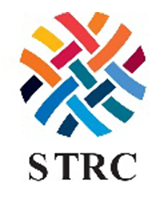AATCC Test Method 100 (TM 100) is one of a number of standard test methods commonly used for quantitative assessment of antimicrobial textiles performance. However, as currently written the method allows for a number of steps to be conducted with several options and can be problematic. Options for the number of swatches and inoculum carrier (nutritive vs non-nutritive) were hypothesized to be primary drivers for variability. The study described here attempted to identify sources of inter-laboratory variability and consisted of two parts: 1) four testing laboratories conducted TM 100 using their in-house method while tracking parameters such as inoculum carrier, number of swatches, incubation conditions and enumeration methods; and 2) conducting TM 100 with certain steps specified (i.e., single swatch, dilute nutrient conditions), while tracking other test parameters. Log reductions were determined and correlated with tracked parameters to identify variability. It was shown that specifying the number of swatches and inoculum carrier did not eliminate variability, as these parameters were not alone responsible for the outcome. Log reduction profiles were similar regardless of whether the in-house or single swatch methods were used. Many parameters such as inoculum prep, swatch incubation conditions, cell recovery, and enumeration methods were done differently and assumed to not affect the outcome. Additional systematic examination of these parameters are needed to determine their role in causing inter-laboratory variability.
